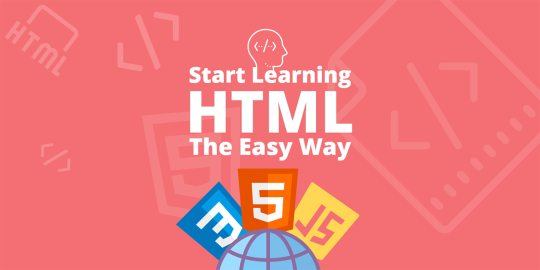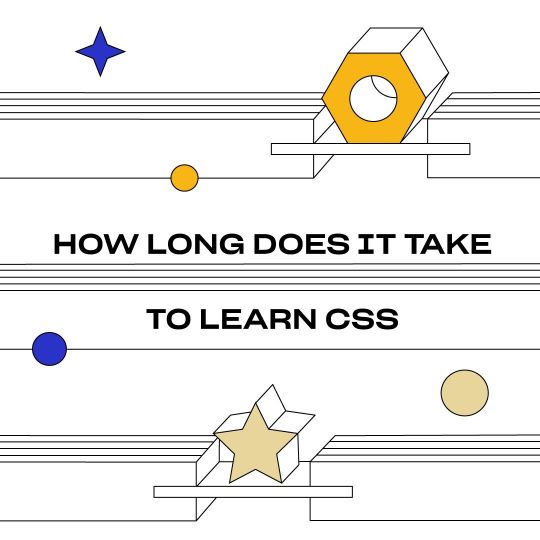#LearningHTML
Explore tagged Tumblr posts
Text
How Long Does it Take to Learn HTML and CSS: Realistic Expectations

Introduction
Welcome to the journey of learning HTML and CSS! Whether you're a complete beginner or someone looking to enhance your web development skills, understanding how long it takes to grasp these fundamental technologies is crucial. In this blog post, we'll delve into the intricacies of learning HTML and CSS, exploring the basics, factors that influence learning time, and realistic expectations to set for yourself.
Understanding HTML and CSS

HTML (Hypertext Markup Language) and CSS (Cascading Style Sheets) are the building blocks of web development. Let's break down each of these technologies to gain a better understanding of their roles and functionalities. Overview of HTML HTML forms the structure of a web page, defining elements like headings, paragraphs, images, links, and more. It uses a tag-based syntax to organize content. For instance, the tag represents a paragraph, and is used for embedding images. HTML provides the essential structure that browsers use to render a webpage. Overview of CSS CSS, on the other hand, focuses on the presentation and styling of HTML elements. It enables web developers to control the layout, colors, fonts, and spacing of elements on a page. With CSS, you can create visually appealing and responsive designs. Selectors, properties, and values are the core components of CSS. Selectors target HTML elements, while properties define the styling rules, such as color, font-size, and margin. Combining HTML and CSS When HTML and CSS work together, they create a harmonious web experience. HTML structures the content, and CSS styles it, resulting in visually pleasing and well-organized web pages. Understanding how to integrate these technologies is crucial for anyone venturing into web development. Key Concepts in HTML and CSS - HTML Tags: Elements like headings, paragraphs, lists, and images are represented using tags, enclosed in angle brackets. - CSS Selectors: Selectors target specific HTML elements, allowing developers to apply styles selectively. - Box Model: CSS uses a box model to represent the layout of elements, comprising content, padding, border, and margin. HTML and CSS Relationship To illustrate the synergy between HTML and CSS, consider the following table: HTML CSS Defines structure and content Defines styling and presentation Uses tags to organize information Uses selectors, properties, and values to apply styles This symbiotic relationship is fundamental to creating well-designed and functional websites. As we explore the journey of learning HTML and CSS, keep in mind their complementary roles and the impact they have on the web development process.
Factors Affecting Learning Time
Learning HTML and CSS is a dynamic process influenced by various factors. Understanding these elements can help you gauge and manage your learning time effectively. 1. Individual Learning Pace The speed at which individuals grasp new concepts varies. Factors such as prior coding experience, cognitive abilities, and personal commitment play a crucial role. Some learners may progress quickly, while others may require more time to master the intricacies of HTML and CSS. 2. Prior Experience with Coding If you have prior experience with coding languages, especially those related to web development, you may find learning HTML and CSS to be more intuitive. Familiarity with programming concepts, syntax, and logic can expedite the learning process. 3. Available Learning Resources The quality and accessibility of learning resources significantly impact the learning curve. Well-structured tutorials, interactive coding exercises, and real-world examples can enhance comprehension. Explore diverse resources, including online courses, documentation, and community forums, to find the ones that resonate with your learning style. 4. Learning Environment The environment in which you learn also matters. A dedicated and distraction-free space, coupled with a supportive community or mentor, can positively influence your learning journey. Regular practice in a conducive environment contributes to better retention and understanding. 5. Project-Based Learning Engaging in hands-on, project-based learning is a powerful strategy. Building real-world projects allows you to apply theoretical knowledge, reinforcing concepts and problem-solving skills. This approach not only accelerates learning but also provides a practical understanding of HTML and CSS in a web development context. 6. Consistent Practice Consistency is key when learning any new skill. Regular practice, even in short sessions, is more effective than sporadic, intensive study sessions. Establishing a routine and dedicating consistent time to learning HTML and CSS will contribute to steady progress. 7. Learning Styles and Strategies Understanding your learning style and adopting effective learning strategies is essential. Whether you are a visual learner who benefits from diagrams and charts or a hands-on learner who thrives on coding exercises, tailor your approach to suit your preferences. Consider these factors as you embark on your HTML and CSS learning journey. Recognizing and adapting to these elements will enable you to set realistic expectations and achieve a balanced and successful learning experience.
Setting Realistic Expectations
Setting realistic expectations is crucial when embarking on the journey to learn HTML and CSS. It's essential to understand the different levels of proficiency, the importance of project-based learning, and how to tailor your approach to your specific learning goals. 1. Beginner, Intermediate, and Advanced Levels Recognize that learning HTML and CSS is a gradual process that unfolds in different stages. Beginners should focus on understanding the basics, such as HTML tags and CSS properties. Intermediate learners can delve into more advanced concepts like responsive design and CSS frameworks. Advanced levels involve mastering complex topics like CSS preprocessors and build tools. 2. Project-Based Learning One effective way to solidify your skills is through project-based learning. Undertake small projects that gradually increase in complexity. This hands-on approach not only reinforces theoretical knowledge but also prepares you for real-world scenarios. Projects provide a practical application of HTML and CSS concepts, enhancing your problem-solving abilities. 3. Learning Styles and Strategies Understanding your learning style is key to optimizing your learning experience. Experiment with different strategies, such as online courses, coding challenges, or collaborative projects. Tailor your approach to align with your strengths, whether you're a visual learner who benefits from diagrams or a hands-on learner who thrives on practical exercises. 4. Realistic Time Commitment Be realistic about the time you can commit to learning HTML and CSS. Learning a new skill takes time, and rushing through the process may hinder understanding. Set achievable goals, break them into manageable tasks, and celebrate small victories along the way. Consistency is more valuable than intensity when it comes to learning web development. 5. Embrace Continuous Learning Web development, including HTML and CSS, is an ever-evolving field. Embrace the mindset of continuous learning. Stay updated on industry trends, explore new features and techniques, and engage with the web development community. This proactive approach ensures that your skills remain relevant and adaptable to the changing landscape. By setting realistic expectations, understanding the progression of learning levels, embracing project-based learning, considering your learning style, and committing to continuous improvement, you'll navigate the learning journey with confidence and achieve sustainable success in mastering HTML and CSS. Understand CSS clamp() function with the following explanation 👨💻🚀 pic.twitter.com/QuDqJd3mgn — David Mraz (@davidm_ml) November 16, 2023
FAQ
Explore answers to commonly asked questions about learning HTML and CSS to gain a clearer understanding of the process. Q: How Can I Speed Up the Learning Process? A: To expedite your learning, establish a consistent study routine, engage in project-based learning, and leverage a variety of resources such as online courses, tutorials, and coding exercises. Additionally, seek guidance from the web development community for valuable insights and support. Q: Are There Any Prerequisites for Learning HTML and CSS? A: No specific prerequisites are required to start learning HTML and CSS. However, having a basic understanding of how websites work and some familiarity with computer operations can be beneficial. These technologies are beginner-friendly, making them accessible to individuals with varying levels of prior experience. Q: Is it Necessary to Learn HTML Before CSS? A: Yes, it is recommended to learn HTML before CSS. HTML provides the structural foundation of a webpage, defining its elements and content. CSS, then, is used to style and present these elements. Learning HTML first ensures a solid understanding of the document structure, making it easier to apply styles using CSS.
Conclusion
Congratulations on reaching the conclusion of our exploration into the timeframe and expectations of learning HTML and CSS. We've covered the fundamental concepts of these technologies, factors influencing learning time, realistic expectations, and frequently asked questions. As you embark on your journey, keep in mind that learning web development is a dynamic process that requires patience, practice, and a proactive approach. Understanding the synergy between HTML and CSS, considering individual learning factors, and setting realistic expectations are key components of a successful learning experience. Embrace project-based learning, tailor your approach to your learning style, and commit to continuous improvement to thrive in the ever-evolving field of web development. Whether you're a beginner aiming to create your first webpage or an experienced developer seeking to enhance your skills, the journey of learning HTML and CSS is both rewarding and empowering. Stay curious, stay engaged, and remember that every line of code brings you one step closer to achieving your web development goals. Read the full article
0 notes
Text
html basics
Here we go! html...DOM...Tags...basic text editor...essential elements...metadata...attributes...w3c...WHATWG...validator...html comments...<!DOCTYPE html>...<head>...<title>...<body>... I think even my thoughts are coming across in code.
0 notes
Text
atmosthemes:







These would be good for scrollbar/sidebar backgrounds as well. <3 ~
credit @ learninghtml
Seamless Pattern Backgrounds
310 notes
·
View notes
Text
Powerful
“You are powerful,”
he says.
“You are encompassing,”
she says.
And their fingertips become
bridges.
He has played these
songs.
She has spoken these
words.
They have been mixed
together.
“You are balanced,”
he says.
“You are strong.”
she says.
And he places his hand behind her
neck.
He moves slowly like
flame.
She burns quickly like
paper.
And they are thrown down into
sunrise.
0 notes